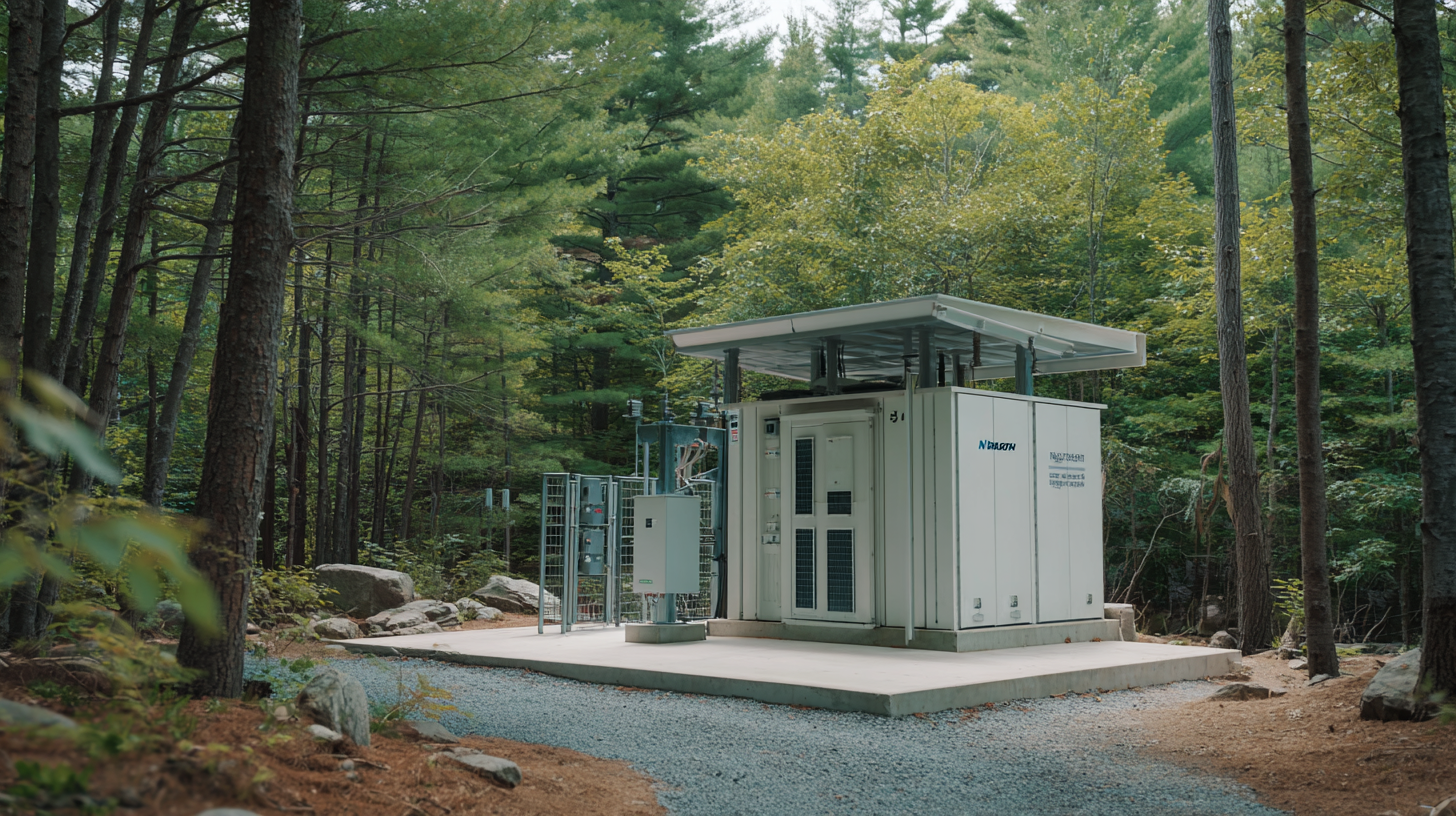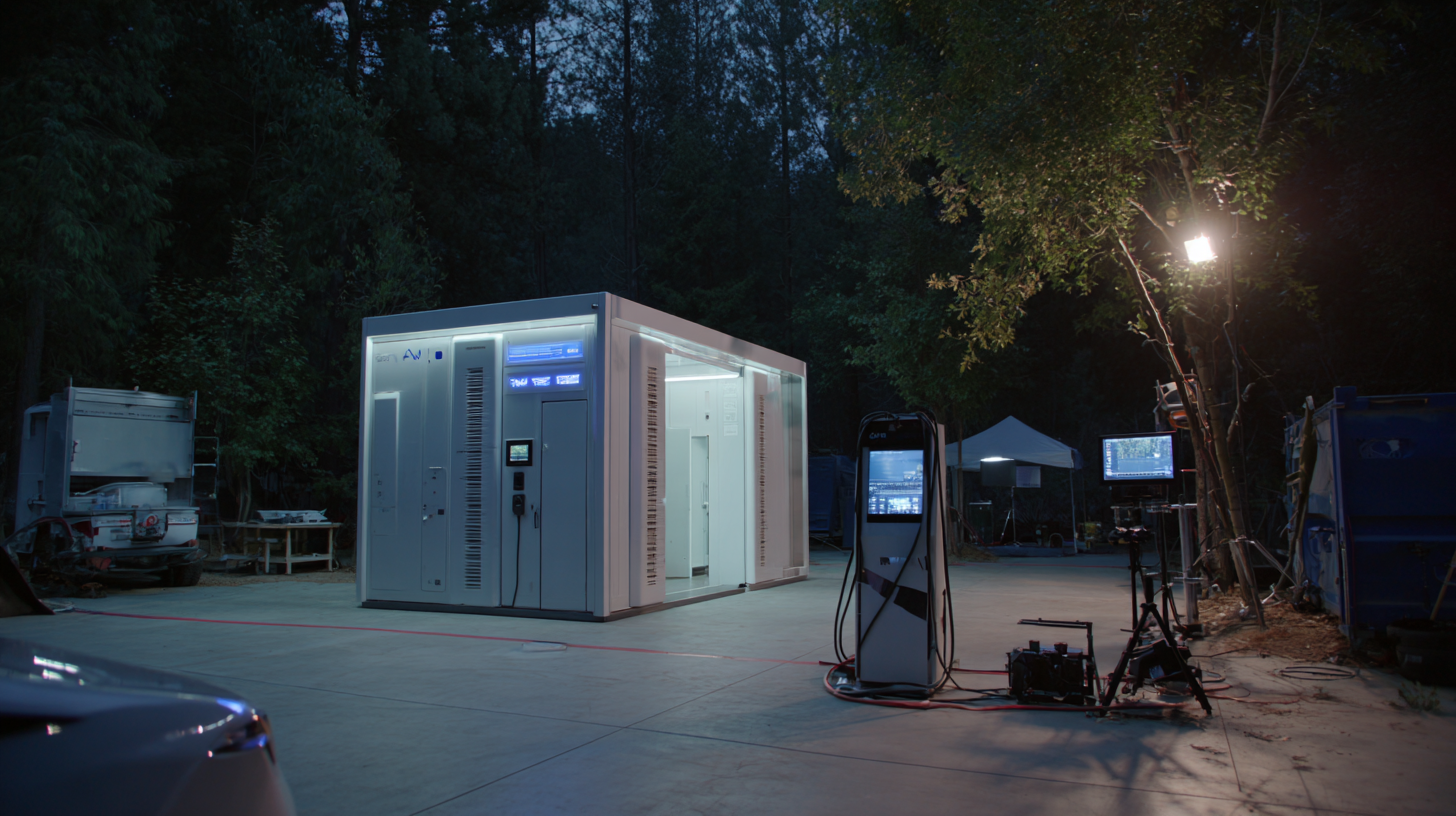
-
Home
-
About Us
-
Products
-
News
-
Blog
-
Contact Us
Leave Your Message

As the energy sector undergoes a transformative shift towards sustainability and smarter technologies, the innovation of devices like the Nh Fuse stands at the forefront. According to a recent report by MarketsandMarkets, the global smart energy market is anticipated to reach USD 400 billion by 2026, fueled by advancements in energy management systems and a growing demand for efficient power distribution.
 The Nh Fuse plays a critical role in this evolution, enabling enhanced safety, reliability, and operational efficiency in energy systems. By allowing for faster fault detection and minimizing downtime in electrical networks, the Nh Fuse not only addresses the rising challenges of energy consumption but also aligns with the industry’s push for greener and more intelligent solutions. The integration of such innovative components is crucial for realizing the potential of smart energy solutions, ensuring a resilient infrastructure that meets future demands while promoting sustainable practices.
The Nh Fuse plays a critical role in this evolution, enabling enhanced safety, reliability, and operational efficiency in energy systems. By allowing for faster fault detection and minimizing downtime in electrical networks, the Nh Fuse not only addresses the rising challenges of energy consumption but also aligns with the industry’s push for greener and more intelligent solutions. The integration of such innovative components is crucial for realizing the potential of smart energy solutions, ensuring a resilient infrastructure that meets future demands while promoting sustainable practices.
The Nh Fuse represents a groundbreaking advancement in smart energy systems, offering numerous advantages that can significantly enhance energy efficiency and reliability. One of the key benefits of Nh Fuses is their ability to improve circuit protection in renewable energy applications. By responding swiftly to overcurrent conditions, they help prevent equipment damage and ensure the safe operation of energy systems, thereby promoting the overall stability of electrical networks.
Additionally, Nh Fuses contribute to the optimization of energy distribution, enabling better load management across various applications. Their design allows for quick replacements and minimal downtime, making them an essential component in settings where uptime is critical. Furthermore, with the increasing reliance on smart technologies, Nh Fuses can be integrated into advanced monitoring systems, facilitating real-time data collection and analysis. This capability empowers operators to make informed decisions, leading to increased operational efficiency and cost savings in the long run.
The role of NH Fuse in energy efficiency and sustainability is becoming increasingly crucial as the world shifts toward smarter energy solutions. According to a report by the International Energy Agency (IEA), improving energy efficiency can contribute significantly to global energy savings, with potential reductions of up to 10% in energy consumption by 2030. NH Fuses, known for their reliability and superior performance in electrical systems, play a pivotal role in this transition. By ensuring stable and efficient energy distribution, NH Fuses help minimize energy losses, thus enhancing overall system effectiveness.
Moreover, the adoption of NH Fuses aligns with the growing emphasis on sustainability in the energy sector. The World Economic Forum estimates that by implementing advanced technologies, including innovative circuit protection solutions like NH Fuses, industries can reduce carbon emissions by 20-30% by 2040. These fuses not only contribute to the longevity of electrical systems but also support the integration of renewable energy sources, enabling a more sustainable energy landscape. As industries strive for reduced environmental impact, NH Fuses present a critical component in achieving these ambitious sustainability goals.
The integration of NH Fuse into smart energy solutions is poised to revolutionize how energy is distributed and consumed. Innovative technologies are at the forefront of this transformation, allowing for seamless communication between energy sources, storage, and consumption points. Advanced monitoring systems, IoT integration, and AI-driven analytics play pivotal roles in optimizing energy flow and enhancing efficiency. This makes NH Fuse not just a component but a critical player in the smart grid ecosystem.
**Tip:** When considering the implementation of NH Fuse, ensure that your energy management system is compatible with IoT devices. This compatibility facilitates better data collection and analysis, leading to improved decision-making regarding energy usage.
Moreover, the drive towards sustainability is accelerating the adoption of NH Fuse. With renewable energy sources becoming increasingly prevalent, integrating NH Fuse with solar panels and wind turbines allows for efficient energy storage and usage. Technologies such as blockchain are also being explored to streamline energy trading and enhance security in transactions, paving the way for a decentralized energy network.
**Tip:** Explore partnerships with tech companies that specialize in smart energy solutions. Collaborating with experts can provide access to cutting-edge technologies that enhance NH Fuse performance and open new avenues for energy efficiency.
| Technology | Integration Benefits | Application Areas | Future Trends |
|---|---|---|---|
| Smart Meters | Real-time data collection and monitoring | Residential and Commercial sectors | Increased user engagement and energy savings |
| Demand Response Systems | Enhanced grid stability and efficiency | Utilities and large consumers | Integration with IoT for automated responses |
| Energy Storage Systems | Load leveling and renewable integration | Commercial, industrial, and renewable energy | Advancements in battery technology and management |
| Microgrid Technologies | Localized energy management and resilience | Isolated communities and military bases | Expansion and connection to larger grids |
| Smart Grids | Improved reliability and reduced outages | Urban infrastructure and data centers | Integration with AI and predictive analytics |
The integration of Nh Fuse technology is transforming the landscape of smart grids, exemplifying its potential through various practical applications. One significant advancement is the role of electronic fuses (e-fuse) in electric and smart vehicles, where they are crucial for modern electrical distribution systems. As the automotive industry accelerates towards electrification and connectivity, e-fuses facilitate streamlined power management, enhancing both safety and efficiency during vehicle operation. By replacing traditional distribution boxes, e-fuses contribute to a more compact and reliable architecture, making them indispensable in future automotive designs.
Moreover, the deployment of Nh Fuse technology in smart grids showcases its versatility beyond automotive applications. Smart grids benefit from the dynamic and scalable nature of e-fuses, allowing for real-time monitoring and control of power flows. This capability not only optimizes energy distribution but also enhances the resilience of the grid against fluctuations and outages. As such, Nh Fuse stands at the forefront of smart energy solutions, enabling a more sustainable and interconnected energy future.

 The development of Nh Fuse technology presents a myriad of future trends and challenges that will shape the landscape of smart energy solutions. As the focus on sustainable energy intensifies, stakeholders in the industry are exploring innovative applications of Nh Fuse that can facilitate efficient energy management and distribution. One significant trend includes the integration of advanced software capabilities into these systems, enhancing their operational efficiency and interconnectivity within smart grids.
The development of Nh Fuse technology presents a myriad of future trends and challenges that will shape the landscape of smart energy solutions. As the focus on sustainable energy intensifies, stakeholders in the industry are exploring innovative applications of Nh Fuse that can facilitate efficient energy management and distribution. One significant trend includes the integration of advanced software capabilities into these systems, enhancing their operational efficiency and interconnectivity within smart grids.
However, the journey towards widespread adoption is not without obstacles. One of the primary challenges is ensuring the scalability and reliability of Nh Fuse in varying industrial contexts. There are also concerns regarding cybersecurity, as the increased connectivity of energy systems makes them more vulnerable to potential threats.
Tips: To navigate these challenges, organizations should invest in robust cybersecurity measures and focus on collaborative platforms that foster innovation in Nh Fuse technology. Engaging in continued research and development can help address the technical hurdles while promoting user education on the benefits of smart energy solutions. Furthermore, staying informed about emerging technologies and trends will empower companies to remain competitive in this rapidly evolving market.





